Dehydrated Cherry Tomatoes are such an easy way to preserve one of the most prolific summer crops. Drying tomatoes is a great way to enjoy your bounty of homegrown tomatoes in the middle of winter.
Cherry tomato plants (and grape tomato plants) are one of the most rewarding garden plants to grow. We call them the gift that keeps on giving. We pick a bunch, look away for a day or two, and then come back and have enough tomatoes to feed a small army.
After we make tomato sauce, tomato paste, cherry tomato salsa, salads, cowboy caviar, pasta salad, snack on tomatoes all day, and give tomatoes to everyone we know – I dehydrate the tomatoes to use later on in the year.
If you don’t have a garden, you can still take advantage of the bounty of fresh tomatoes this time of year and pick up some of your favorite tomatoes at the farmer’s market or grocery store. Tomatoes are always cheaper this time of year, and they are so much more delicious – look for locally grown and heirloom tomatoes to get the most flavor.
Dehydrated Cherry Tomatoes are almost a sun-dried tomato. (I have tried sun-drying tomatoes, but where I live, the bugs always win… so I settle for dehydrated tomatoes.)
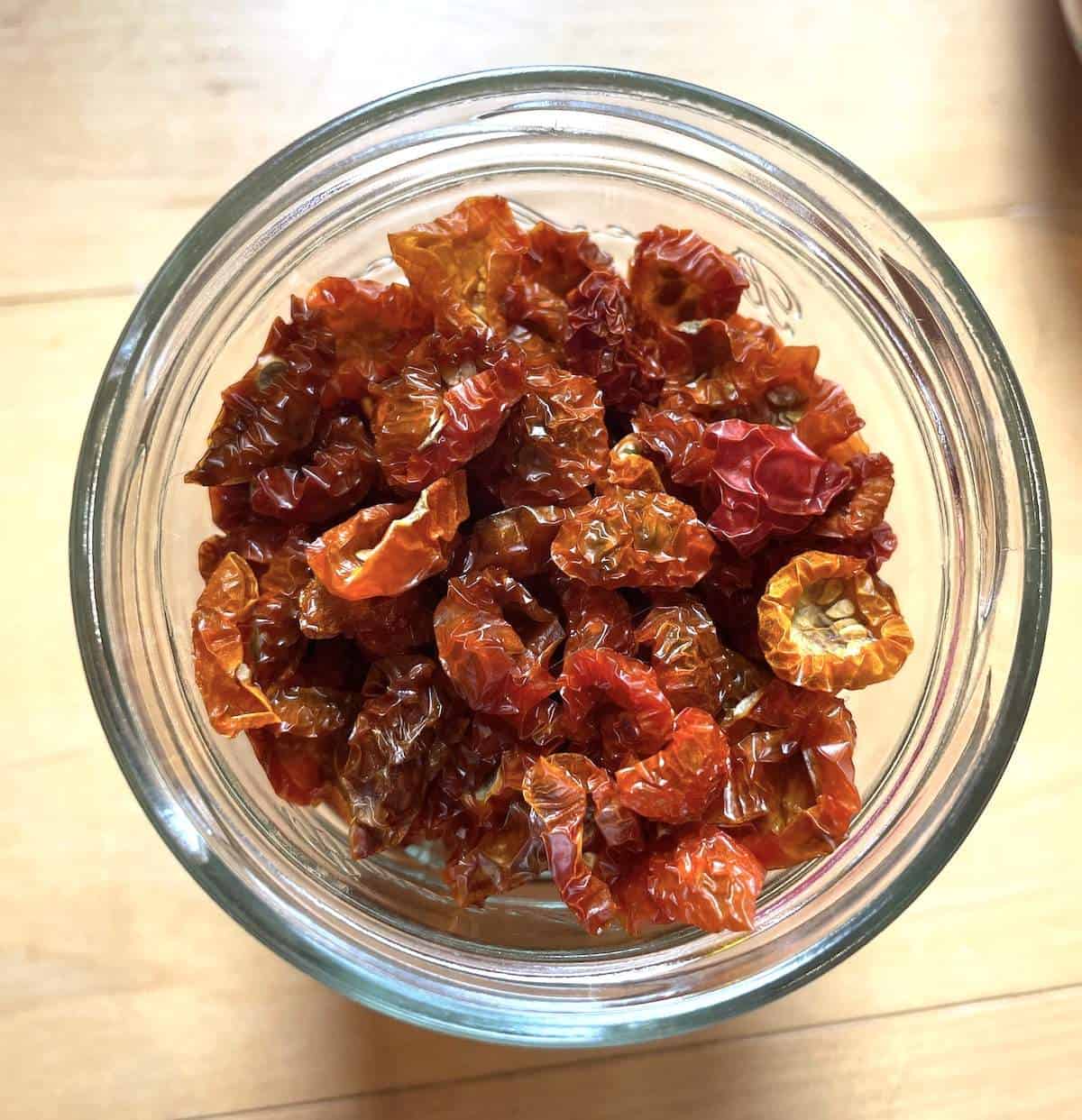
Dried Cherry Tomatoes are so great to have on hand because you can soak them in oil, then blend them up into an amazing pesto-type spread with basil and garlic for pasta, pizza, or crackers – or add cream cheese to make a delicious dip!
Table of Contents
- 🍅 Ingredients Needed
- 🍽 Equipment Needed
- 👩🌾 How to Dehydrate Cherry Tomatoes
- ☀️ How to Sun Dry Tomatoes
- 🍅 How to Condition Dried Tomatoes
- 🫙 How to Store Dried Tomatoes
- ⏲ How Long Can You Store Dehydrated Cherry Tomatoes?
- 🍅 Uses for Dehydrated Cherry Tomatoes
- 🙋♀️ Frequently Asked Questions
- 🧂 How Do You Make Tomato Powder?
- 🍅 What Can You Use Tomato Powder For?
- ♨️ How Do You Dehydrate Large Tomatoes?
- ✏️ Helpful Tips
- 🍓 More Things to Dehydrate
- How to Dehydrate Cherry Tomatoes Recipe
🍅 Ingredients Needed
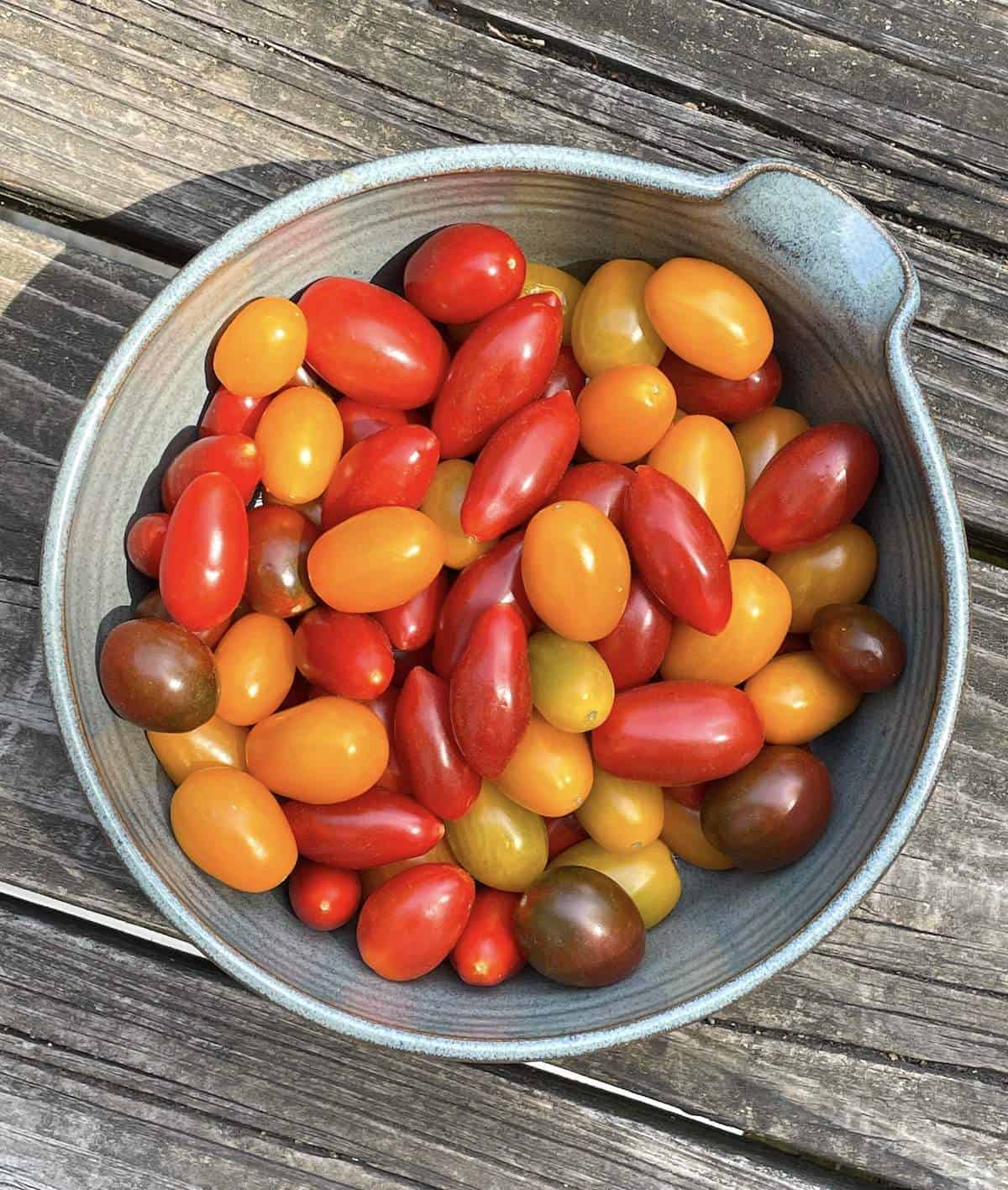
- Cherry Tomatoes or Grape Tomatoes – This process works best on most small tomatoes, like cherry tomatoes, grape tomatoes, Sun Gold Tomatoes, Sweet 100’s, Swett Millions, Juliette Tomatoes, Jelly Beans, etc. (I dehydrated some Chocolate Sprinkles Tomatoes last year, and they didn’t have a ton of flavor when rehydrated, so take that into account as well – if the tomatoes are not super flavorful when they are fresh don’t try to preserve them for use later on – you will only be disappointed.)
- You can also dehydrate larger tomatoes like Roma Tomatoes or Paste Tomatoes, just be aware that they will take a lot longer to fully dry.
- Water – To wash the tomatoes.
- Optional, Salt
🍽 Equipment Needed
- A Food Dehydrator – You can use a nice dehydrator like an Excalibur Dehydrator (this is what we have) or a Cosori Dehydrator, or you can use a cheaper dehydrator like this one. We have one that was $5 at Goodwill and it works fine, it just gets really hot and has no temperature control, so we have to watch it closely because things can turn to jerky pretty quickly.
- Or, An Oven
- A Knife & Cutting Board
- Mason Jars
- Food Safe Desiccant Packs
👩🌾 How to Dehydrate Cherry Tomatoes
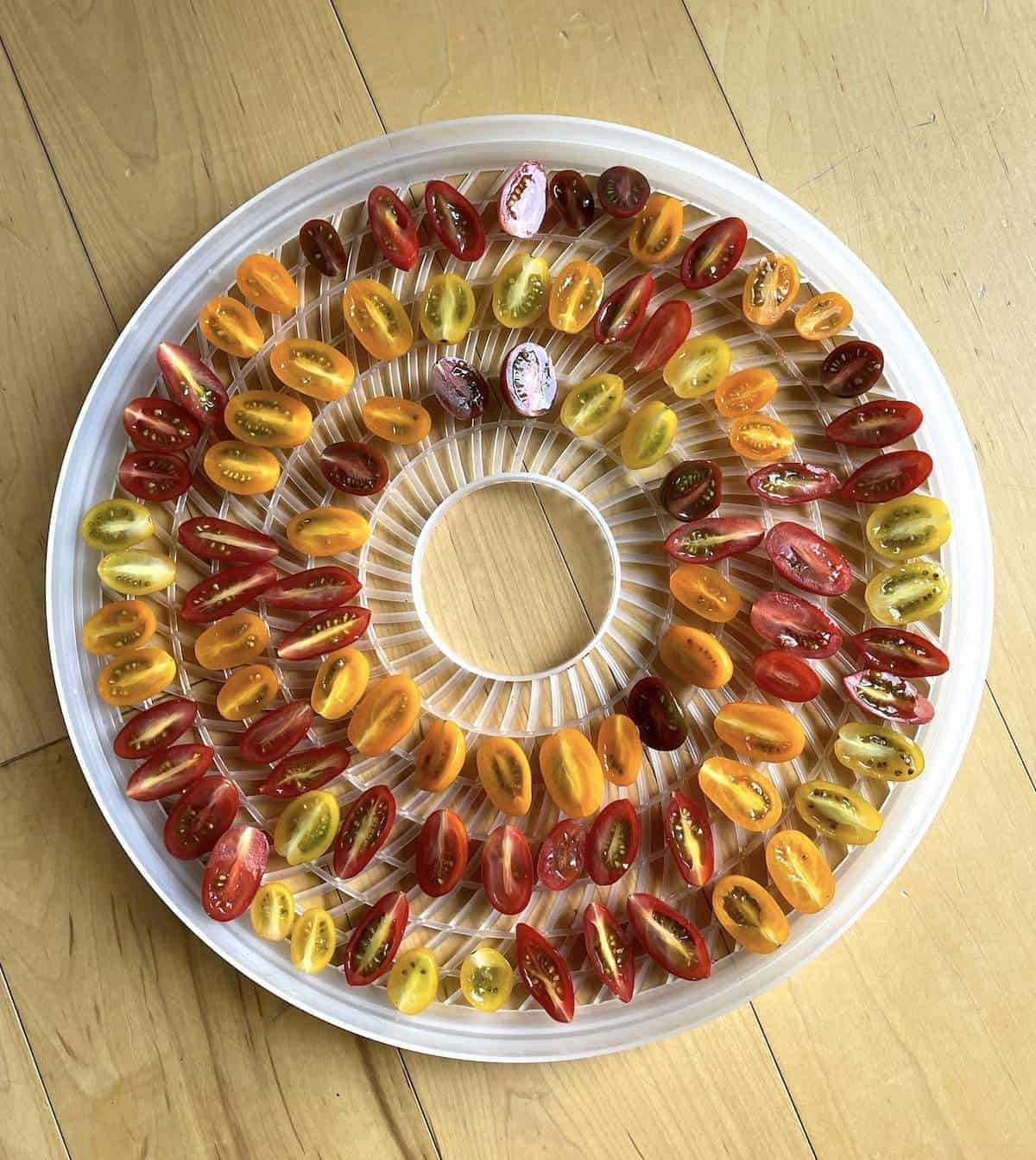
Whether you use a dehydrator or the oven to dry tomatoes, you will still start the same way. Wash the tomatoes and let them dry – I use a colander and then give them a little wrap and massage them with a towel. They don’t have to be completely dry, but they are much easier to cut if they are mostly dry.
Then slice all the tomatoes in half. (If they are kind of oval/oblong tomatoes, I cut them along their long axis so more of their middle surface area is exposed.)
♨️ Dehydrator Instructions
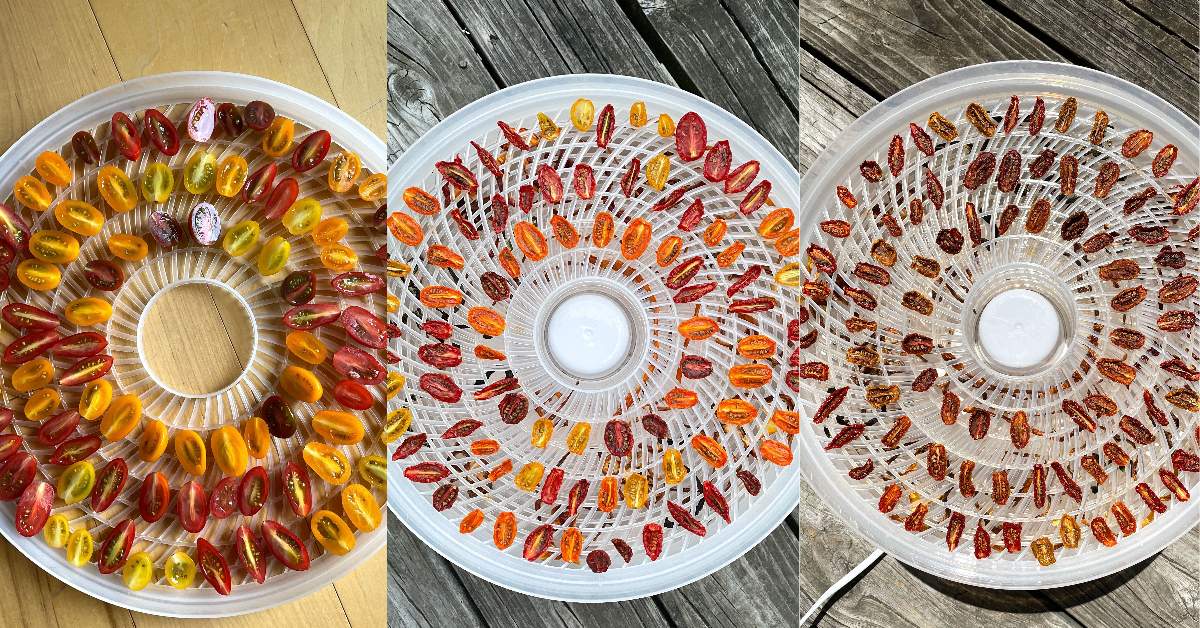
- Place sliced tomatoes in a single layer on the dehydrator tray with the insides (cut side) facing up, like tiny bowls. (Skin side down.)
- Carefully slide trays into the dehydrator.
- Dehydrate at 125°F for 8 – 18 hours, depending on the size and types of tomatoes that you use. Rotate the trays (bring the top to the bottom and back to the front) about halfway through the drying process. (If your dehydrator has a fixed temperature, it will likely take less time as these dehydrators tend to run really hot.)
- Remove from the dehydrator when tomatoes are shriveled, crunchy, and no longer tacky.
- Condition the tomatoes (see below), then move them to long-term storage.
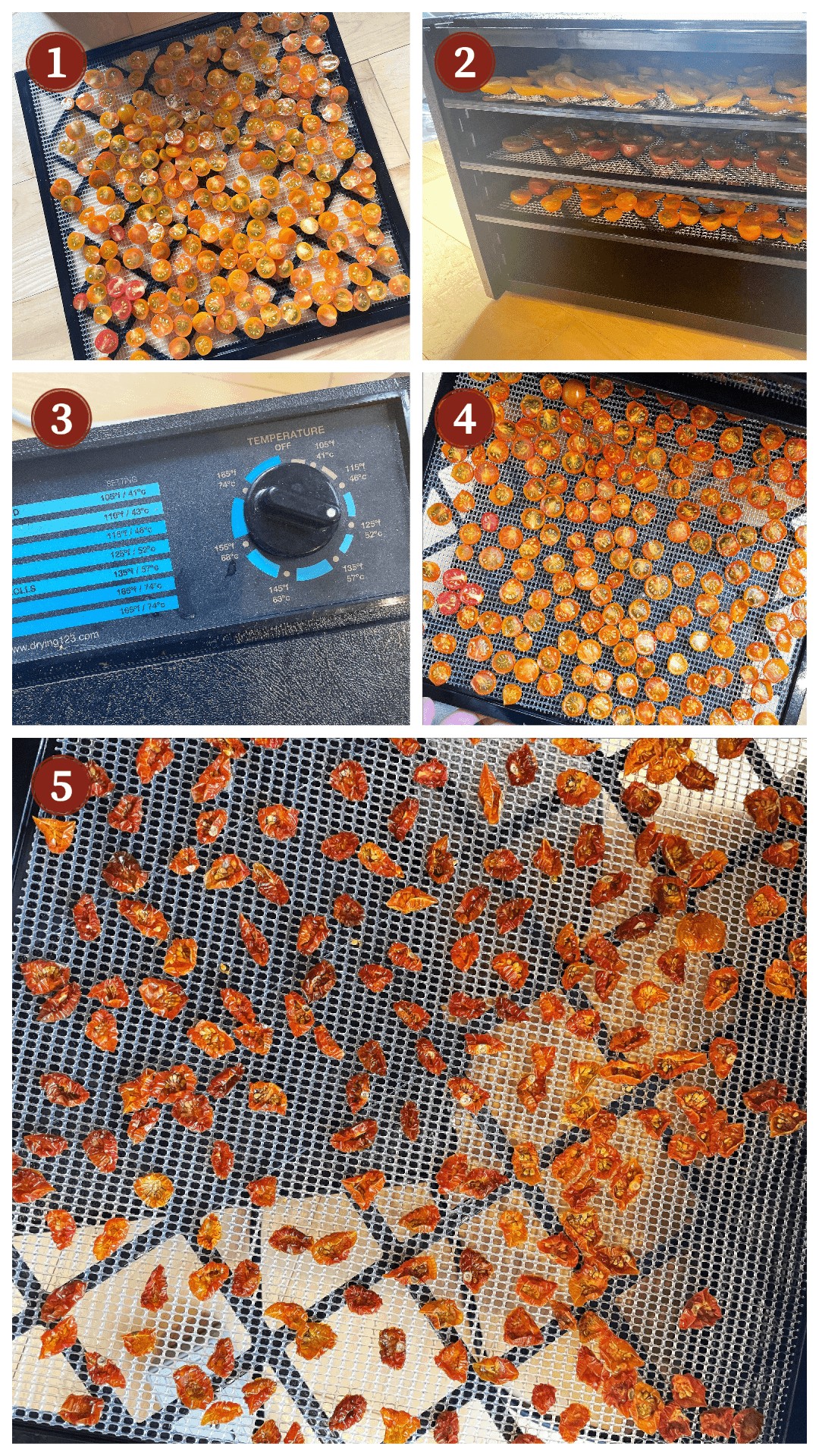
♨️ How to Dehydrate Cherry Tomatoes in the Oven
- Preheat your oven to the lowest setting, around 170°F – 175°F.
- Place sliced tomatoes in a single layer on a parchment paper-lined baking sheet with the insides (cut side) facing up, like tiny bowls. (Skin side down.)
- Carefully slide the baking sheet into the oven.
- Bake with the door cracked for 4 – 8 hours, checking on the tomatoes after about 2 hours. You can hold the door propped open with a rubber spatula or a trivet. Rotate the baking sheet about halfway through the drying process. (Fair warning, your house is going to start smelling like tomato sauce.) Again, the total time will depend on the size and types of tomatoes that you use.
- Remove the trays from the oven when the tomatoes are shriveled, crunchy, and no longer tacky.
- Condition the tomatoes (see below), then move them to long-term storage.
☀️ How to Sun Dry Tomatoes
While dehydrated cherry tomatoes have a pretty close taste and texture to a traditional sun-dried tomato without actually being “sun” dried, you can actually sun-dry cherry tomatoes. The flavor of the tomatoes will be really rich and delicious – this is how sun-dried tomatoes that you buy in a jar are made in Italy. The reason I personally don’t do this is because it takes a long time, and I don’t have a place to leave the tomatoes where I can keep them safe from bugs, chipmunks, squirrels, humidity, etc.
Making sun-dried tomatoes works best if the weather is low in humidity (less than 60%) combined with high temperatures of 90ºF or more during the day. The temperature here would be great, but the air feels like you are breathing water. You can certainly give it a try in a humid place, but you would likely have more success with another drying method.
🗒 Instructions
- Slice tomatoes in half, then place them cut side up on screens or dehydrator trays and sprinkle them with a little salt.
- Find a good spot to rest the tomatoes, and be sure the trays are elevated so air can circulate underneath them. If you are making multiple trays, you can rest them on parallel boards. For single trays, you can use cinderblocks, folding chairs, shoes, cardboard boxes, notebooks, pots, and pans – there are a lot of options if you get creative!
- Cover the tomatoes on the tray with a cheesecloth or thin sheet like a tent – covering the tomatoes but not touching them. (You can hold the cheesecloth up with skewers or chopsticks – again, get creative!)
- Leave the tomatoes outside to dry in the sun during the day for anywhere from 4 days to two weeks. They will need to be brought in every night or moved somewhere safe to protect them from animals and dew.
- Keep putting the trays of tomatoes outside every day until they are completely dry – unlike dehydrated tomatoes, they won’t be crisp but they will be chewy and dry.
Due to the nature of sun-drying tomatoes, I would err on the side of caution and store them in the refrigerator or freezer and use them more quickly than I would use tomatoes that are dehydrated using other methods due to lack of consistent heat – there is a higher chance of them not being totally dry in the center and a higher chance of them growing bacteria.
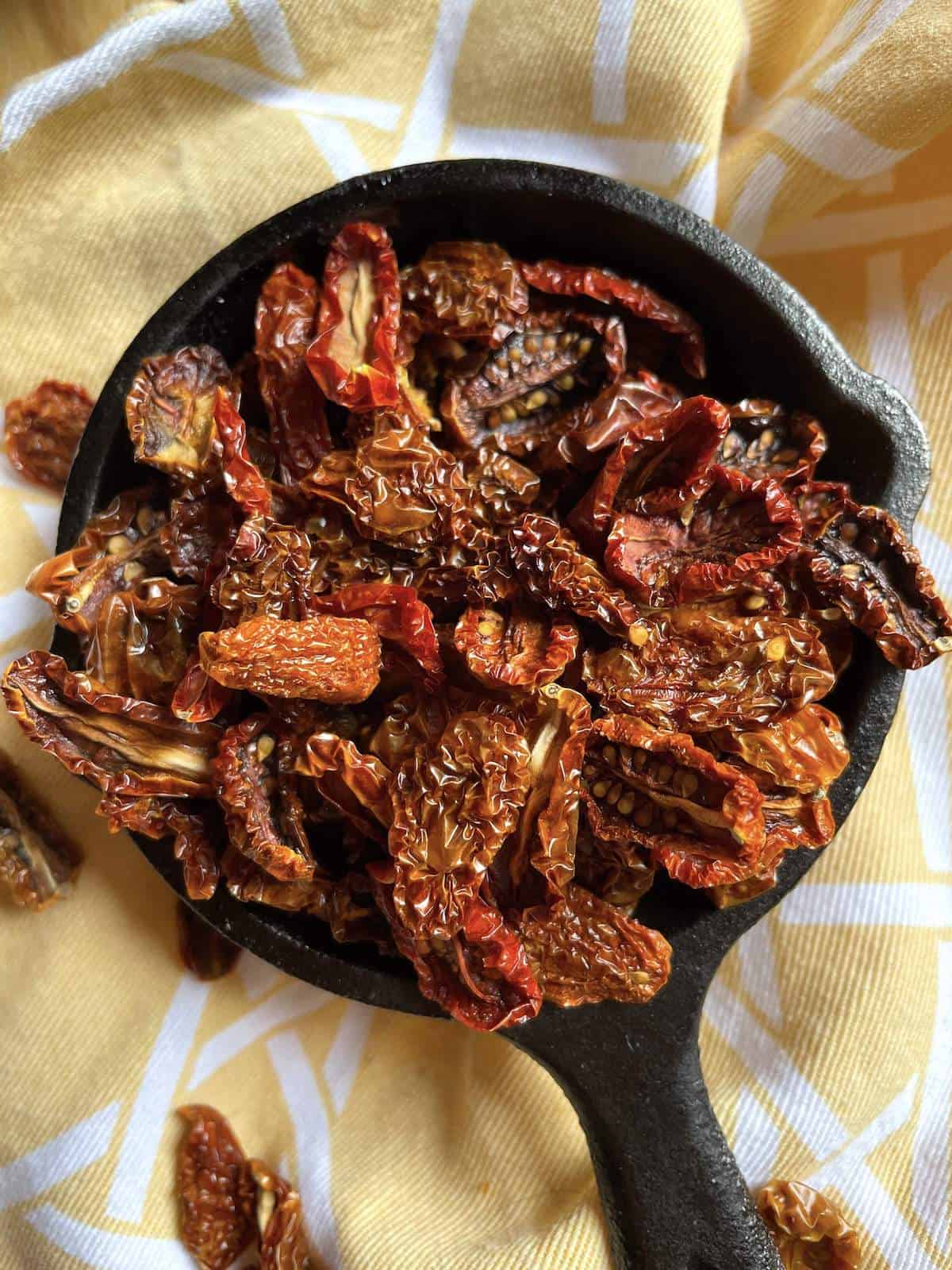
🍅 How to Condition Dried Tomatoes
What is conditioning?
Conditioning is when you help balance the humidity level in your storage container. This helps prevent the likelihood that mold will grow on your dehydrated food.
Why do you need to condition dehydrated food?
When dehydrating, not all food dehydrates at the same rate. You might check on your food, in this case, tomatoes, and notice that some are completely dehydrated, but you might find that others aren’t dry yet. There’s a reason that this happens.
Why doesn’t food dehydrate evenly?
- Even before dehydrating, different pieces of food have varying amounts of moisture.
- Dehydrators (and ovens) just may not dry equally or evenly, especially if you don’t rotate trays. Sometimes one tray can block air from getting to other trays or if you use a mat to make fruit rolls, that can really block some of the air.
- We are human beings and cannot cut everything exactly the same size.
So, with that being said, here’s how to condition your tomatoes.
First, be sure that they are dry. Here’s a link to the NCHFP to confirm.
Next, place the tomatoes in an airtight container (that has a little bit of extra space) in an area that is dry and out of direct sunlight.
Every day for the next 7 days, give the jar a shake while checking for moisture beads in the jar. If you notice any but don’t see any mold, put the tomatoes back into the dehydrator and begin the process again. If you do see mold, unfortunately, you will need to discard the tomatoes.
If all is well after 7 days, you can either vacuum seal the tomatoes or close up the jar with a desiccant pack and move them into the pantry for long-term storage.
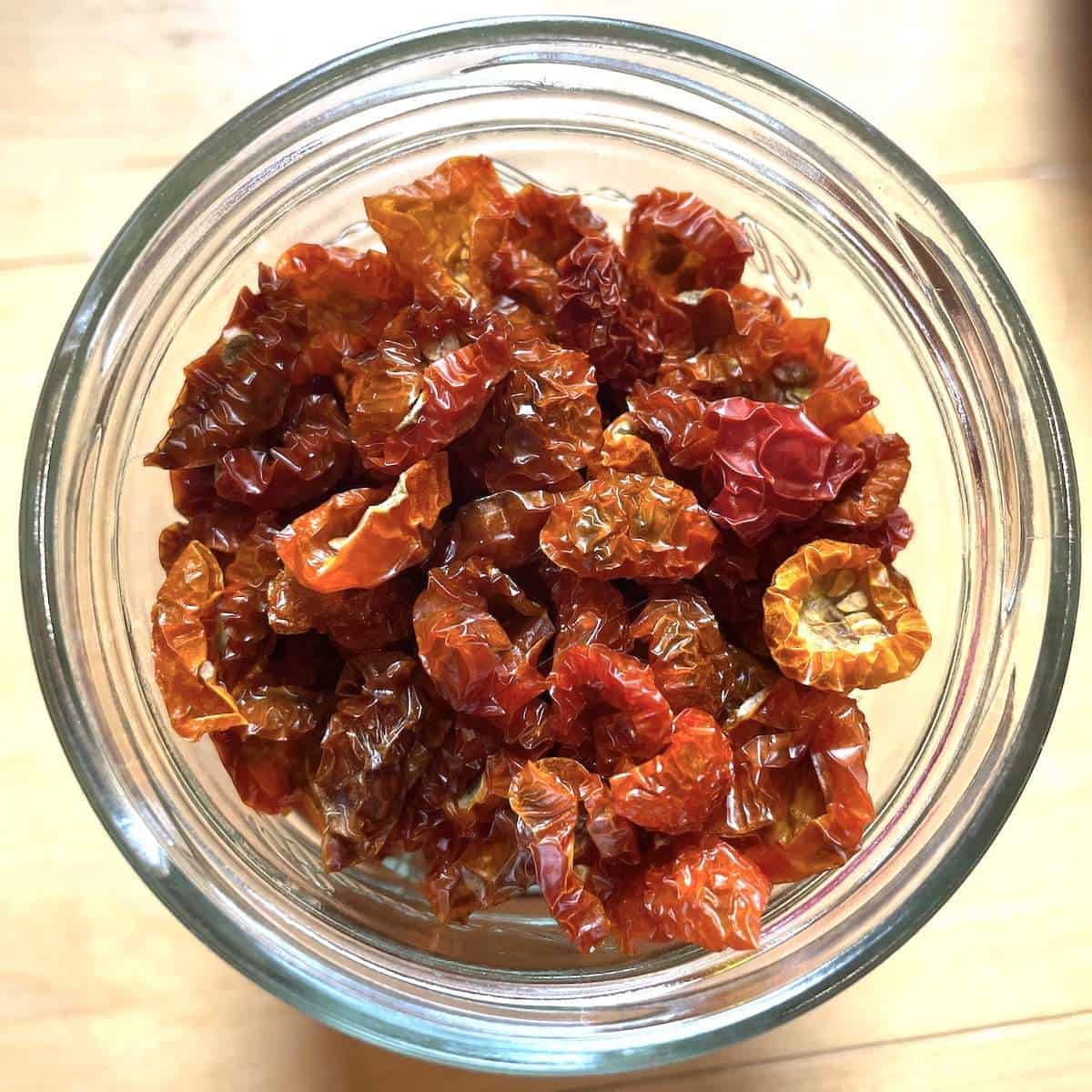
🫙 How to Store Dried Tomatoes
Store tomatoes in an airtight container, like a glass jar, with a food-safe desiccant packet. Not only will this keep them fresh longer, but they also look so pretty sitting on a shelf in a jar. (Though do try to keep dehydrated foods stored out of direct sunlight and in a dark place if possible!)
You can also seal them in Mylar bags to store for a very long time if needed.
⏲ How Long Can You Store Dehydrated Cherry Tomatoes?
Dried Cherry Tomatoes, once properly conditioned, will be shelf-stable for 8-12 months. They will likely last longer, but the quality will deteriorate over time.
🍅 Uses for Dehydrated Cherry Tomatoes
Here are some of my favorite recipes for using dried tomatoes:
- As Sun-Dried Tomato Pesto – combine dried tomatoes with olive oil, a splash of red wine vinegar, garlic, salt, and fresh basil. Puree in a food processor, then use the spread on pizza. So good!
- Use dehydrated tomatoes in salad as a sweet garnish.
- Eat tomatoes dry as a snack, like raisins or dried cranberries.
- Make a jar of “sun-dried” cherry tomatoes by soaking the tomatoes in good-quality olive oil and storing them in the fridge. The oil will harden up, so just let it come to room temperature before using. (This MUST be stored in the fridge and does not have a long shelf life.) If the tomatoes are tough, they can be blanched in boiling water before adding them to the oil.
- Finely chop up tomatoes and add them to bread, muffins, dough, etc.
- Use them in pasta dishes.
- Mix them into scrambled eggs.
- Rehydrate in a little avocado oil, then make a mayonnaise/aioli spread.
- Using a food processor, chop them into smaller pieces and add them to hummus.
- Grind dried tomatoes or tomato skins into a tomato powder and add to sauces, mayonnaise, dips, soups, etc.
Make Italian Seasoned Sun-Dried Tomatoes to scramble in eggs or put in pizza – soak dried tomatoes in good-quality olive oil with red wine vinegar, minced garlic, & Italian Seasoning.
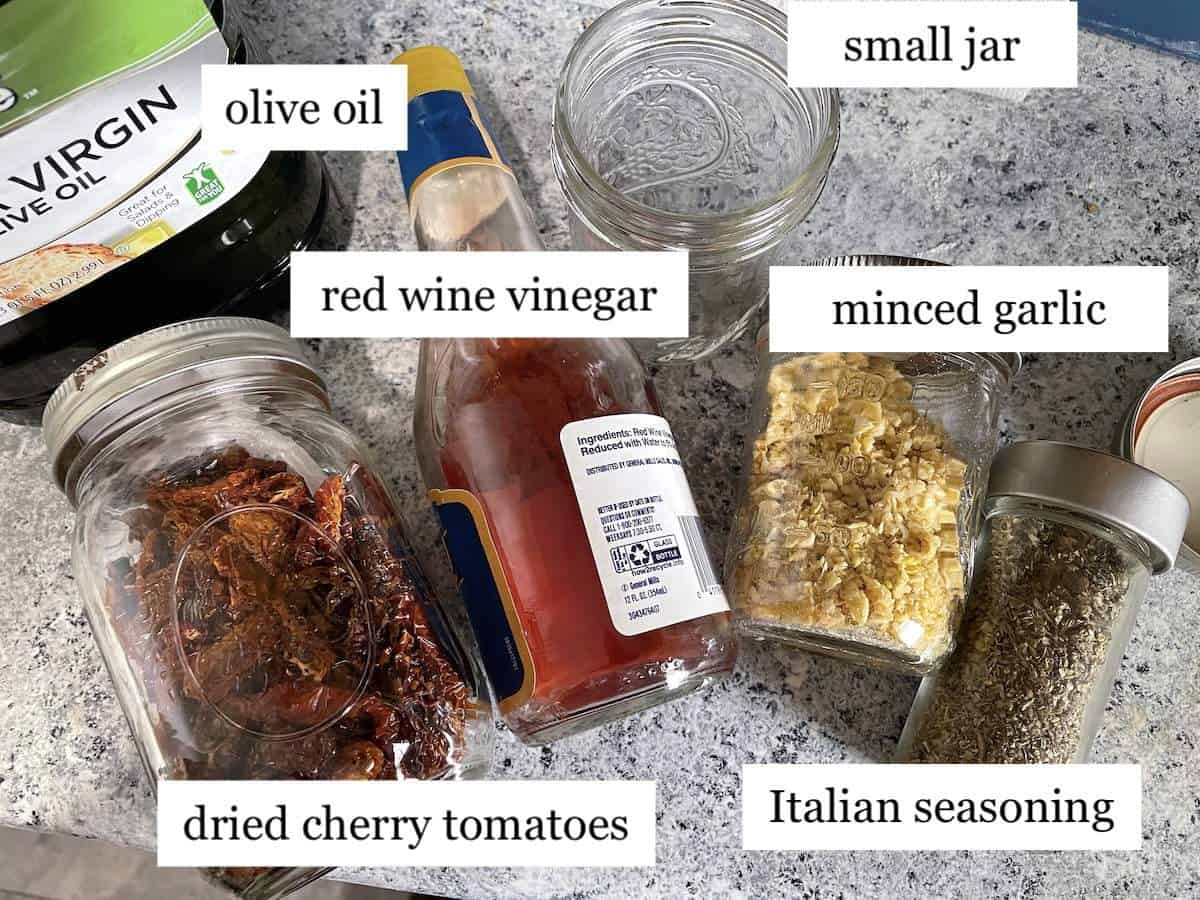
If the tomatoes are really tough, they can be blanched in boiling water before adding them to the oil. Store this in the fridge – let it come to room temperature before using.
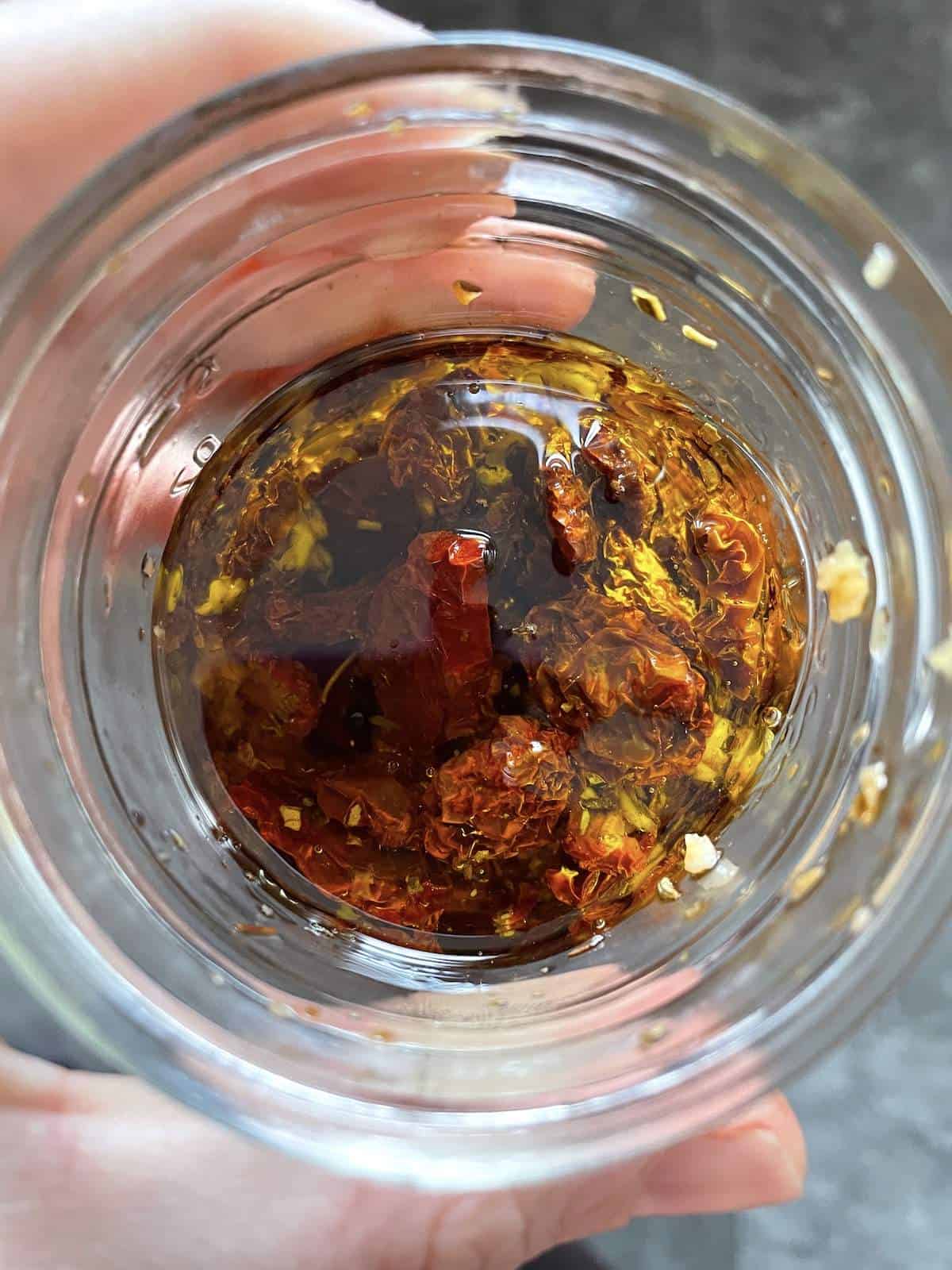
🙋♀️ Frequently Asked Questions
As long as they are properly conditioned and stored in an airtight container, dehydrated tomatoes should last for 8 – 12 months.
🧂 How Do You Make Tomato Powder?
There are two ways to make tomato powder – either grind up dried tomatoes or – my favorite low-waste option, dry tomato skins and grind them up.
I place the skins of tomatoes that are leftover from making tomato sauce onto the trays of the dehydrator and dry them at 125°F for about 4-6 hours. They might dry in less time if they are not soggy. Once dry, condition the skins just like any other dried produce, then grind the skins up using a spice grinder or a high-powered blender.
🍅 What Can You Use Tomato Powder For?
Add tomato powder to sauces, mayonnaise, dips, soups, eggs, and casseroles. You can sneak so much extra nutrition into your recipes by adding tomato powder!
♨️ How Do You Dehydrate Large Tomatoes?
For larger tomatoes, like Roma tomatoes, plum tomatoes, paste tomatoes, or sauce tomatoes, I like to cut them into thin slices and dehydrate them until they are like a thin cracker or a chip.
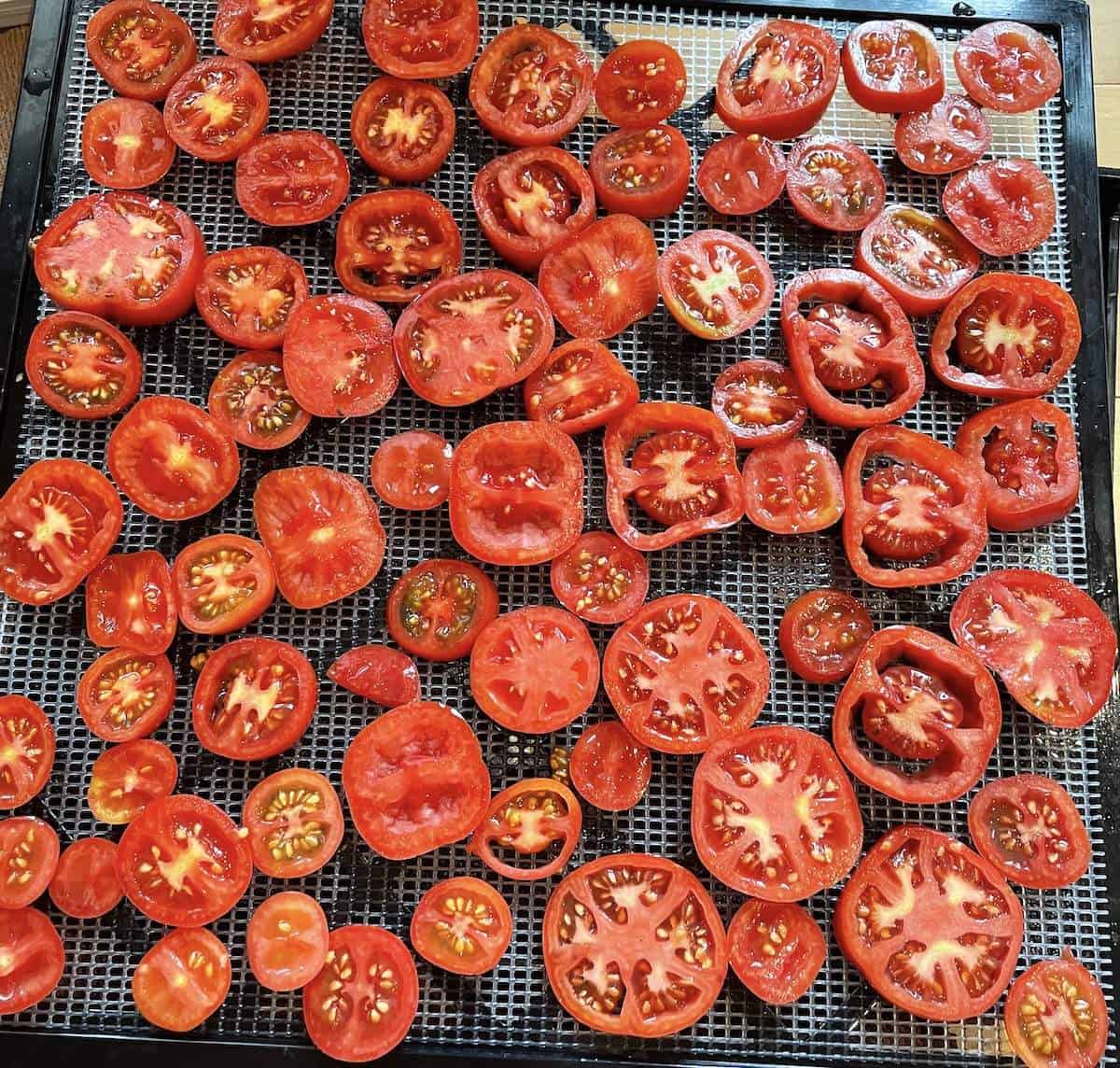
✏️ Helpful Tips
- Rotate the Trays – I recommend rotating your trays at least once during the drying process. I usually do this about halfway through. This way, foods will take turns being closer to the heat source & this helps ensure more uniform drying.
- Look Out for Case Hardening – Try not to dehydrate tomatoes at too high of a heat – they can fall victim to case hardening, where the outside hardens too fast, and moisture can no longer escape from the inside. You will end up with a hard exterior and moist interior – and this will eventually ferment & grow mold.
- Shake Your Tomatoes – Check on your dehydrated cherry tomatoes from time to time and give the jar they are in a shake – just to make sure they are not sticking together or growing mold.
🍓 More Things to Dehydrate
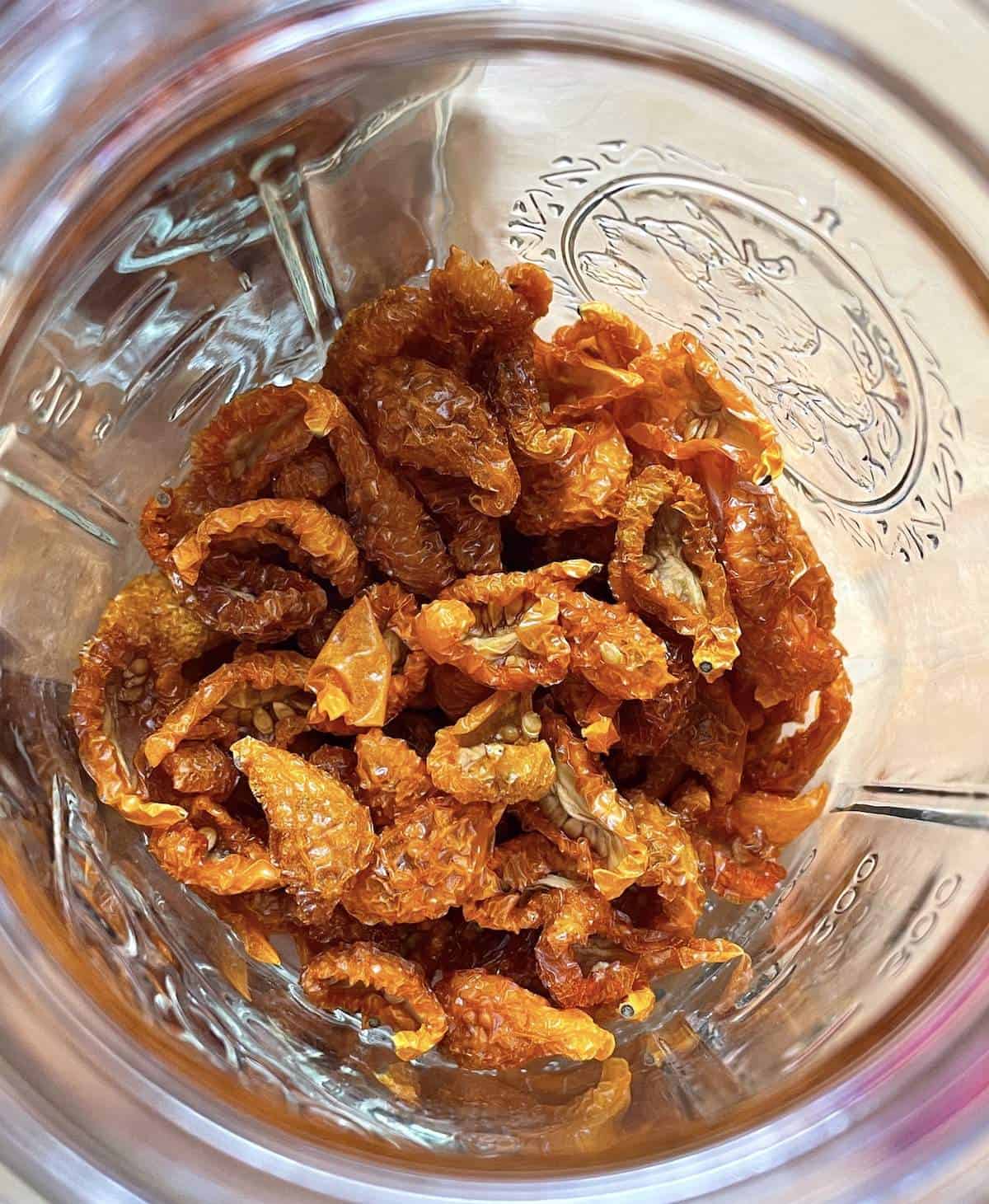
Have You Tried This Recipe?
Please rate it and leave a comment below. I would love to hear what you think!
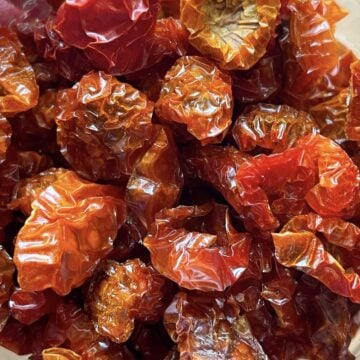
How to Dehydrate Cherry Tomatoes
Ingredients
- 2 cups cherry tomatoes
Optional
- salt
Instructions
- Wash the tomatoes to get any dirt, bugs, or leaves off of them.
- Slice the tomatoes in half – they will dry easier this way.
Dehydrator Instructions
- Lay the tomatoes cut side up on (like tiny bowls) the tray of a dehydrator – they can be close together, just not overlapping or stacked on top of each other. (Air needs to be able to circulate.)

- Set the dehydrator to 125°F for 8 – 18 hours. (If your dehydrator does not have an adjustable temperature, it is probably around 160°F and the tomatoes will dehydrate much faster – around 6 – 8 hours. I prefer low and slow dehydrating to preserve more of the tomato flavor.)

- Once the tomatoes are dry, they should be shriveled, crunchy, and not sticky.

- Condition the tomatoes (see below) then move them to long-term storage.
Oven Instructions
- Preheat your oven to the lowest setting, around 170°F – 175°F.
- Place sliced tomatoes in a single layer on a parchment paper-lined baking sheet with the insides (cut side) facing up, like tiny bowls. (Skin side down.)
- Carefully slide the baking sheet into the oven.
- Bake with the door cracked for 4 – 8 hours, checking on the tomatoes after about 2 hours. You can hold the door propped open with a rubber spatula or a non-conductive trivet. Rotate the baking sheet about halfway through the process. (Fair warning, your house is going to start smelling like tomato sauce.) Again, the total time will depend on the size and types of tomatoes that you use.
- Remove from the oven when tomatoes are shriveled, crunchy, and no longer tacky.
- Condition the tomatoes (see below) then move them to long-term storage.
How to Sun Dry Cherry Tomatoes
- Slice tomatoes in half, then place them cut side up on screens or dehydrator trays and sprinkle them with a little salt.
- Find a good spot to rest the tomatoes and be sure the trays are elevated so air can circulate underneath them. If you are making multiple trays, you can rest them on parallel boards. For single trays, you can use cinderblocks, folding chairs, shoes, cardboard boxes, notebooks, pots and pans – there are a lot of options if you get creative!
- Cover the tomatoes on the tray with a cheesecloth or thin sheet like a tent – covering the tomatoes but not touching them. (You can hold the cheesecloth up with skewers or chopsticks – again, get creative!)
- Leave the tomatoes outside to dry in the sun during the day for anywhere from 4 days to two weeks. They will need to be brought in every night or moved somewhere safe to protect them from animals and dew.
- Keep putting the trays of tomatoes outside every day until they are completely dry – unlike dehydrated tomatoes, they won’t be crisp but they will be chewy and dry.
- Due to the nature of sun-drying tomatoes, I would err on the side of caution and store them in the refrigerator or freezer and use them more quickly than I would use tomatoes that are dehydrated using other methods due to lack of consistent heat – there is a higher chance of them not being totally dry in the center and a higher chance of them growing bacteria.
Condition the Tomatoes
- Place the dried tomatoes in an airtight container (that has a little bit of extra space) in an area that is dry and out of direct sunlight.
- Every day for the next 7 days, give the jar a shake while checking for moisture beads in the jar. If you notice any but don’t see any mold, put the tomatoes back into the dehydrator and begin the process again. If you do see mold, unfortunately, you will need to discard the tomatoes.
- If all is well after 7 days, you can either vacuum seal the tomatoes or close up the jar with a desiccant pack and move them into the pantry for long-term storage.
Notes
Helpful Tips
- Rotate the Trays – I recommend rotating your trays at least once during the drying process. I usually do this about halfway through. This way, foods will take turns being closer to the heat source & this helps ensure more uniform drying.
- Look Out for Case Hardening – Try not to dehydrate tomatoes at too high of a heat – they can fall victim to case hardening, where the outside hardens too fast and moisture can no longer escape from the inside. You will end up with a hard exterior and moist interior – and this will eventually ferment & grow mold.
- Shake Your Tomatoes – Check on your dehydrated cherry tomatoes from time to time and give the jar they are in a shake – just to make sure they are not sticking together or growing mold.
Special Equipment Needeed
Nutrition
Nutrition information is approximate and is automatically calculated, so should only be used as a guide.
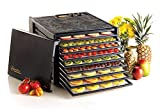
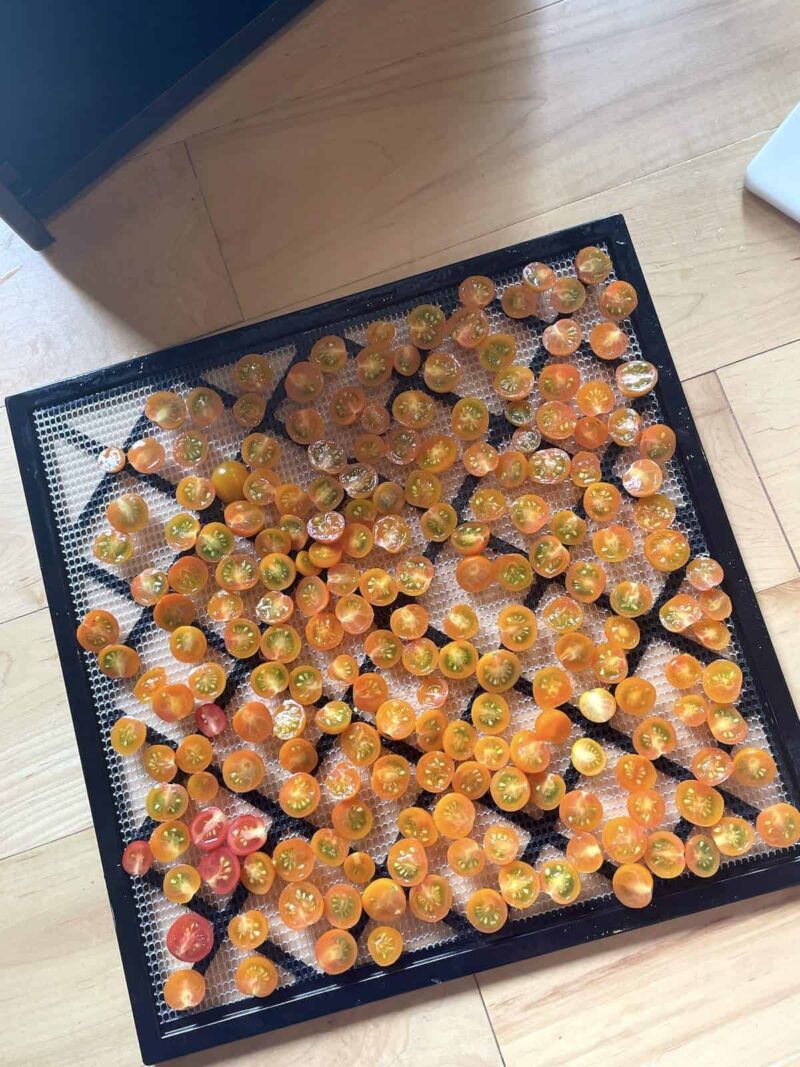
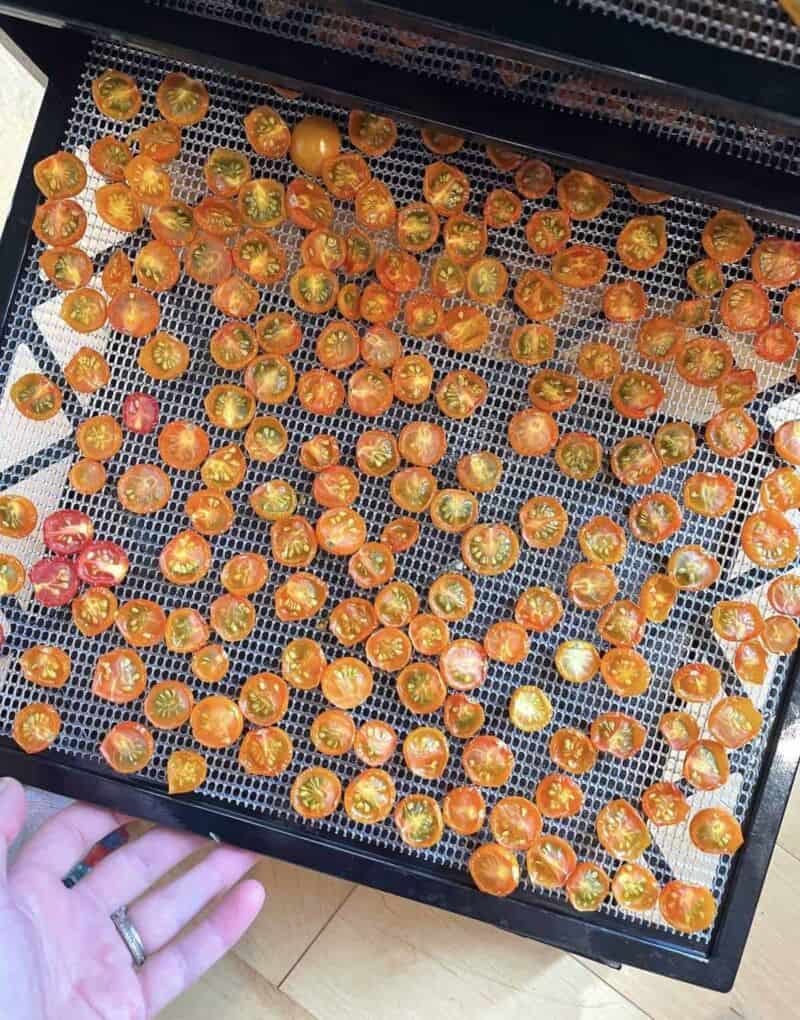
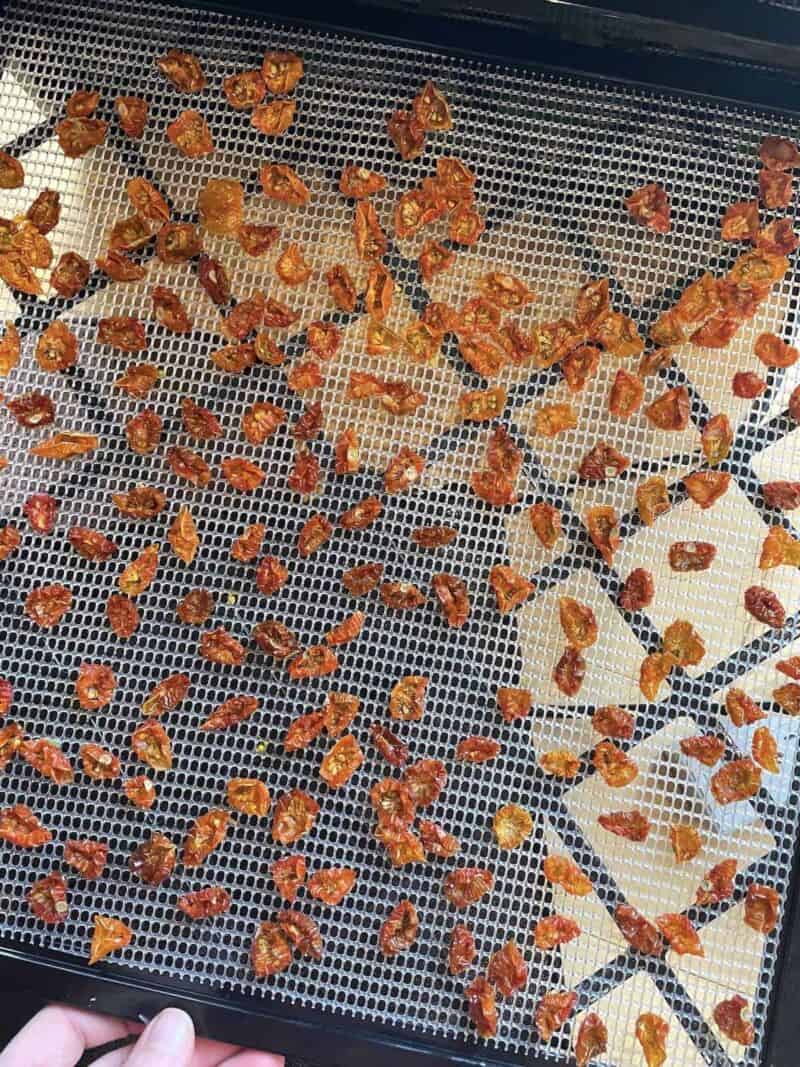


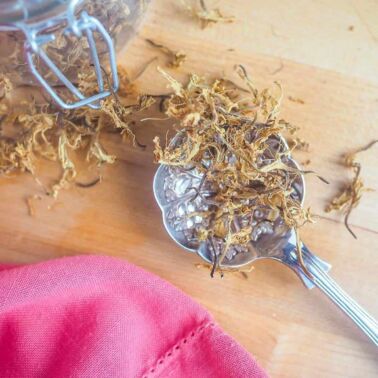
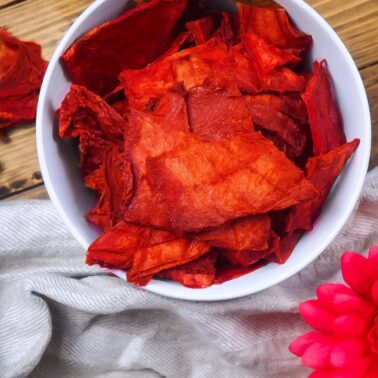

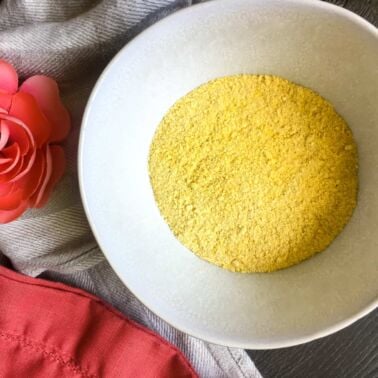









Now I need an Excalibur in my life! We grow lots of cherry tomatoes, and this is a perfect solution to our “extra” bounty.